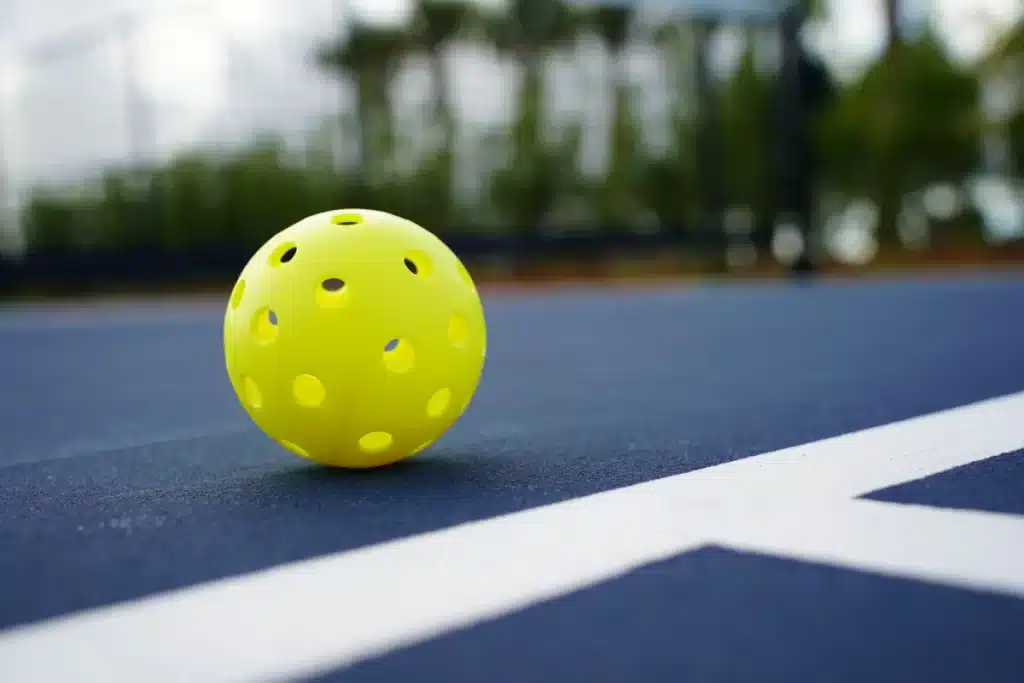Table of Contents
Calling all the pickleball fans out there! Do you love playing this incredible sport? Well, then, you must have an idea of the science behind this small ball you hit with your paddle. Understanding the basics of the game is really essential on its own. Whether it’s the optimal size of your pickleball court or the surface types, everything you must know before jumping into the real game. Now, have you ever wondered what pickleball is made of? Think think! You must be thinking about the material of this ball. Feeling the grip of a pickleball in your hand must send some more questions inside your head. Let your curiosity rise, as we are here to answer all your questions. Let us not waste any more time, as the clock is ticking! And hit that pickleball with the best grip that we have learned. Don’t forget to use that paddle!
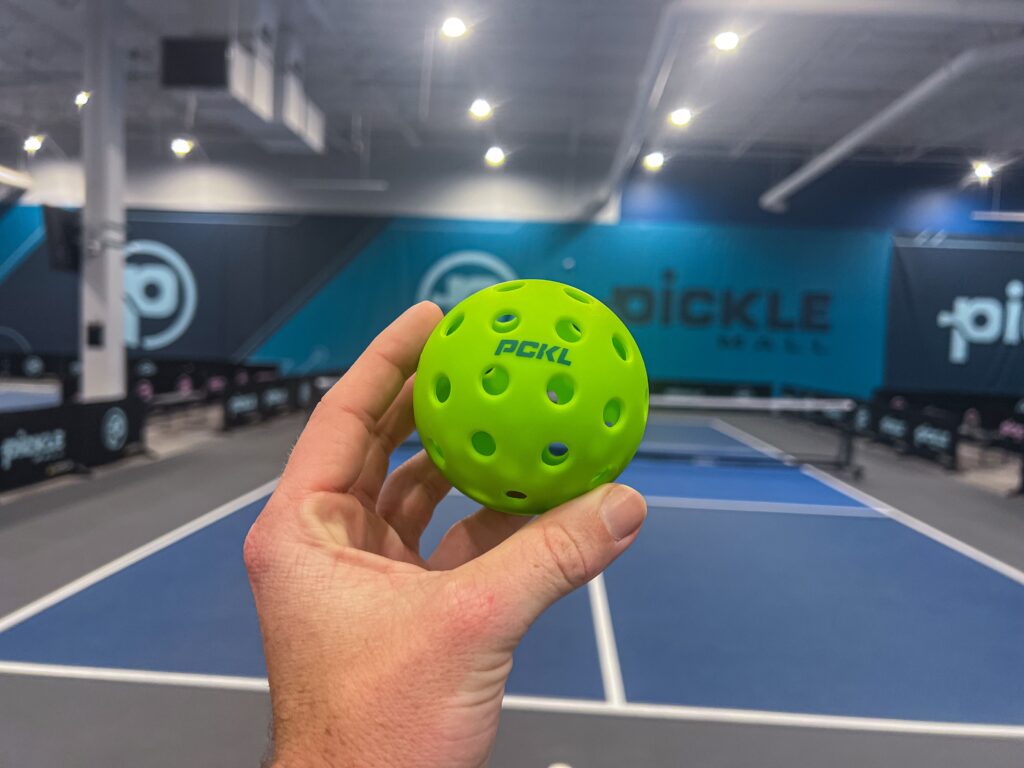
What is Pickleball Made of?
Whether it’s about knowing the perfect height of your pickleball game net or learning to hit singles, this complete knowledge of any sport is really crucial for any sportsperson. Now the question is, what is a pickleball made of? Pickleballs are made of lightweight, long-lasting plastic with performance enhancements in mind. Indoor balls have larger holes for improved control, whereas outdoor balls have smaller holes to lessen the effect of wind.
The materials and structure ensure consistent bounce and longevity. Pickleball courts are to be on various surfaces, such as concrete, asphalt, and sports fields. Their adaptability allows them to be there in a variety of playing environments. Pickleball players may select the ideal ball for their play style, whether indoors or outdoors, by being aware of the intricacies of pickleball’s construction and materials. Let’s take a look at how this pickleball comes to being, what material is there, and what processes it goes through!
A Glimpse at Pickleball Material with Type
The material composition of pickleballs, which are crucial to the game, varies depending on whether they are for indoor or outdoor play. The selection of material has a big impact on the ball’s durability, performance traits, and court surface appropriateness.
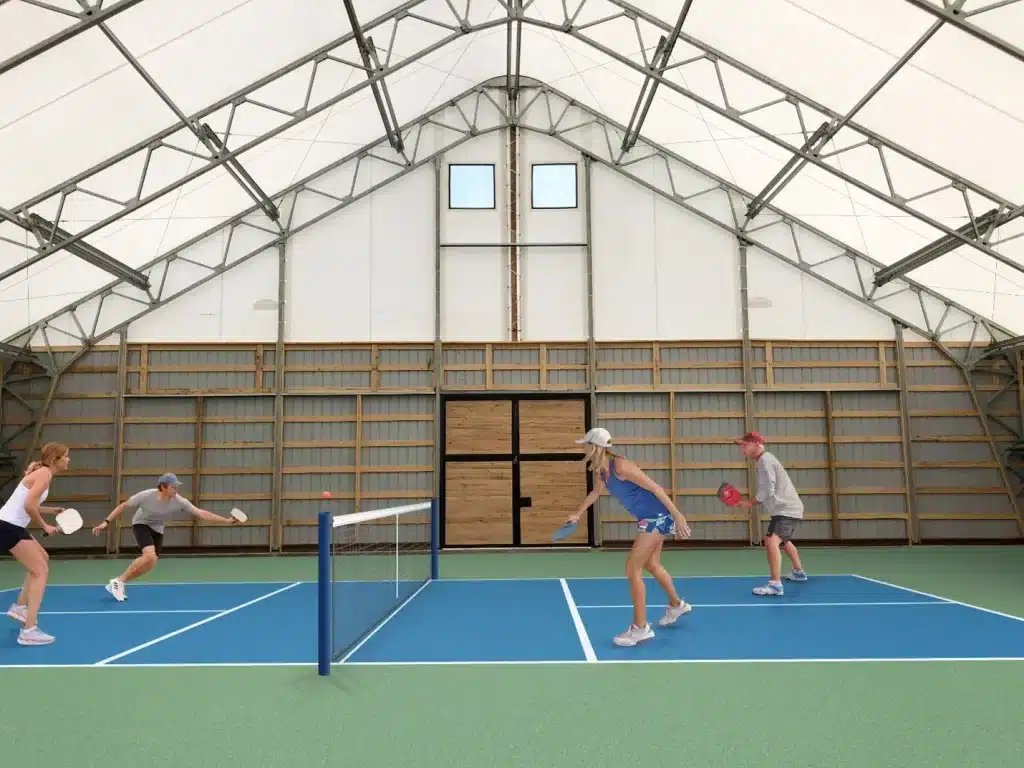
Pickleball Indoors wrt What is a Pickleball Made of?
Indoors vs Outdoors. Pickleballs used indoors are usually of polypropylene, a little softer plastic. This material has several benefits that make it ideal for the smooth surfaces of gym floors.
- Control and Precision
Polypropylene facilitates softer touches and better control during volleys, which makes it simpler to execute accurate shots and controlled spins.
- Quieter Play
In indoor environments where noise control may be an issue, the softer material reduces the sound of the ball striking the paddle and court.
- Kinder to Paddles
Compared to more challenging outdoor balls, the softer plastic does less damage to pickleball paddles, extending their lives.
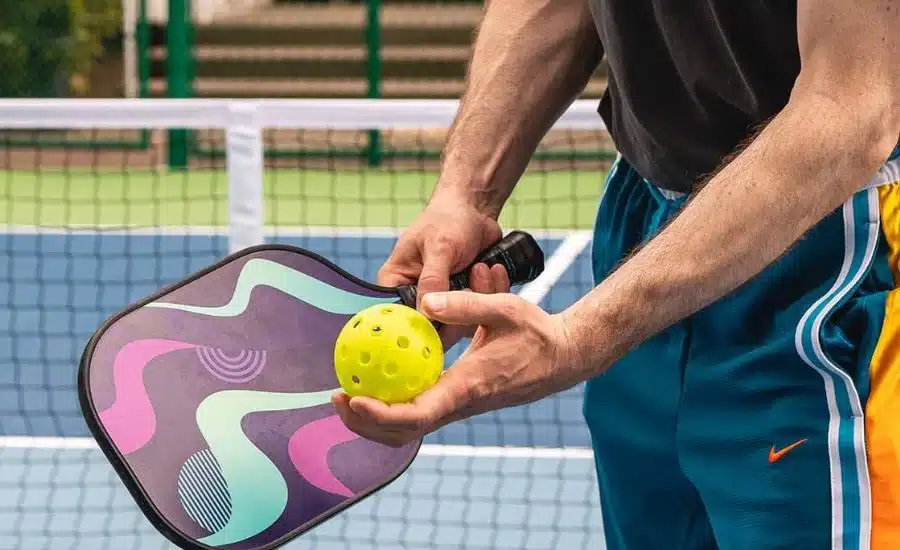
Pickleballs Outdoors wrt What is a Pickleball Made of?
Pickleballs made outdoors usually have a more durable outside shell made of materials like polyethylene. These balls are made to survive the more demanding circumstances seen on concrete or asphalt courts.
- Durability
The outdoor pickleballs’ tougher plastic shell makes them more resilient to breaking or splitting when they come into contact with hard surfaces.
- Weather Resistance
Outdoor balls are designed to endure exposure to environmental factors such as sunshine and rain, guaranteeing long-term performance.
- Bounce and Speed
The tougher material bounces quicker and more vibrantly in outdoor rallies that require rapid reflexes and forceful shots.
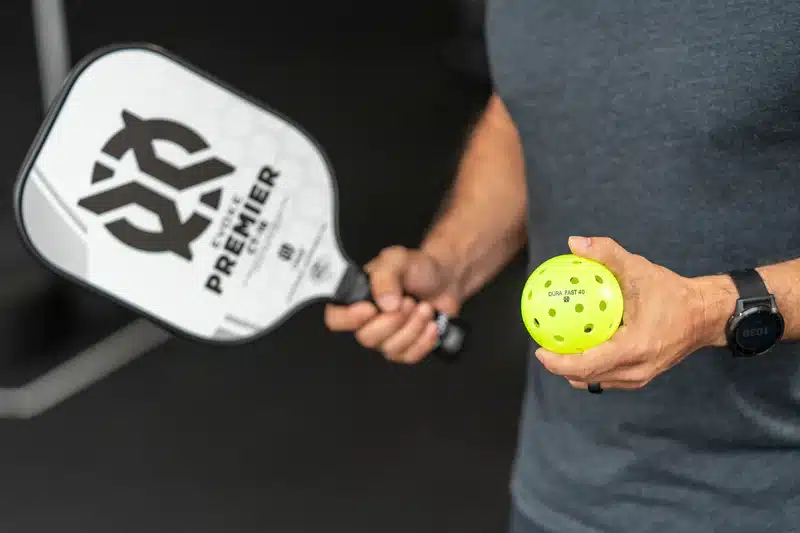
What is a Pickleball Made of? The Pickleball Manufacture Method
Pickleballs are mainly constructed of plastic and carefully crafted using specific manufacturing techniques to guarantee performance and longevity on the court.
- Materials utilized
Plastic is the primary material used to build pickleballs because it is long-lasting and can hold its form and bounce.

Methods Used in Pickleball Manufacturing
There are two main manufacturing processes for pickleball, and each has an impact on the ball’s characteristics.
The rotational molding process involves pouring plastic into a mold and slowly rotating it until it solidifies.
As a Resultant Feature
- Durability
Pickleballs produced by rotational molding are more resilient and can tolerate a range of court surface conditions.
- Speed
Because of the way these balls are made, they usually go a little quicker.
The process of injection molding involves injecting molten plastic into a mold, where it fuses together to form a ball.
As a Resultant Feature
- Leap
Injection-molded pickleballs usually bounce higher, which is good for players who like a fast-paced game.
- Affordability
This strategy can benefit a wider variety of players as it frequently yields balls at a reduced cost.
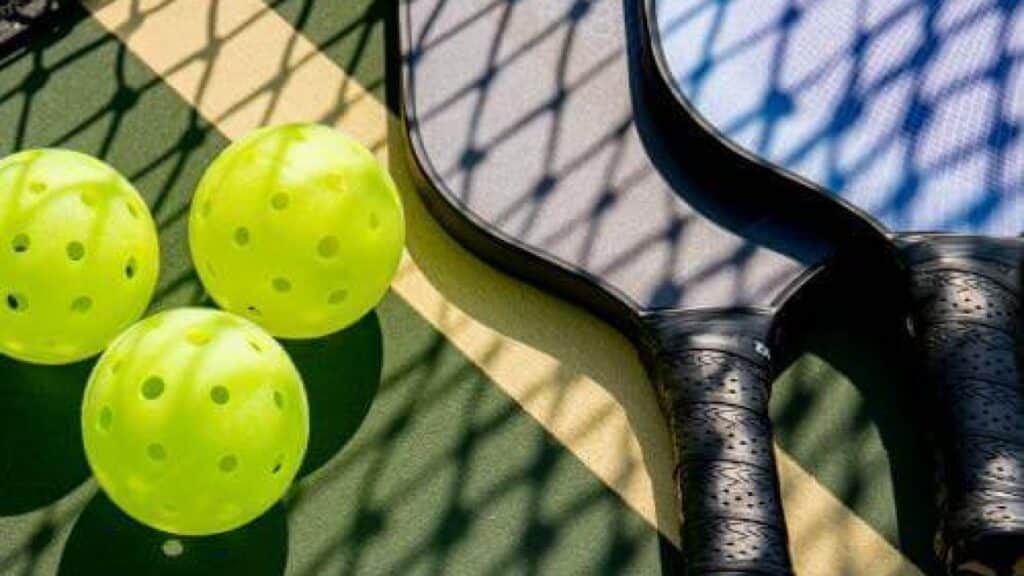
Pickleball Construction Secrets
- Hollow Core Balance
Pickleballs are painstakingly there to obtain the ideal weight and flight characteristics. Their balanced hollow core materials ensure they don’t become unstable or unmanageable under various circumstances.
- Strategic Holes
The location and size of holes greatly influence a pickleball’s flight through the air. While outdoor balls have smaller holes to reduce wind interference and preserve speed and accuracy, indoor balls have fewer larger holes for better control on smooth surfaces.
- Weight for Performance
Weight is very important during games. Because they are lighter, indoor pickleballs allow for more accurate volleys and delicate shots. Slightly heavier outdoor versions provide more power for extended rallies and aggressive play styles.
- Quality Assurance
Weight, bounce, and hole layout are all to be consistent when tight guidelines by associations like the USAPA are there. When selecting pickleballs for elite performance and dependability in competitive environments, look for the USAPA-approved seal.
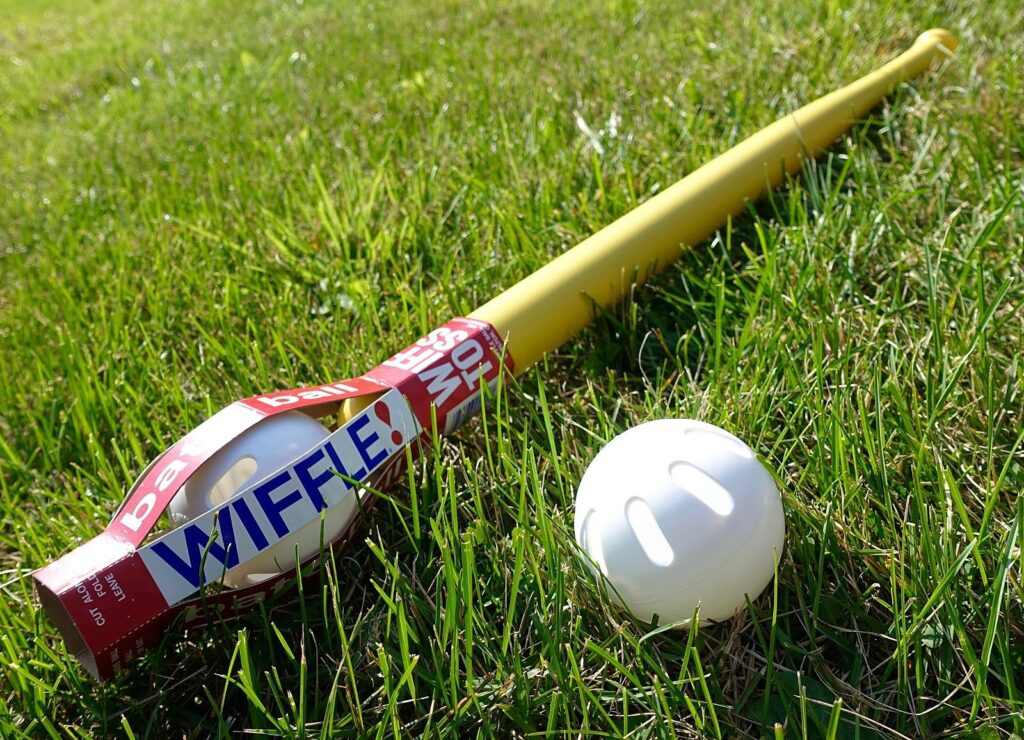
Difference Between Pickleball and Wiffle Balls
Despite their initial superficial similarity, pickleballs and wiffle balls have different uses in sport surfaces and leisure activities. Knowing these differences can greatly impact performance and gaming experience.
1. Material and Construction Comparison
Pickleballs are of a more durable plastic to provide reliable play on the court. They have holes positioned intentionally to reduce air resistance and increase speed during play, with holes equally spread across the surface. Wiffle balls, on the other hand, emphasize safety and fun in informal settings because they are of a softer, lighter plastic. Because of their unusual design, which only has holes on one side, they fly slower and more randomly, making them perfect for laid-back backyard games.
2. Performance Features
Pickleballs are excellent in competitive settings because they have quicker bounce times and consistent bounce qualities, which allow for fast rallies and tactical play. Their robust build allows them to sustain intense play without losing performance. Because of their lightweight design and slower flight patterns, waffle balls are better for leisurely play and create a relaxed ambiance that is enjoyable for players of all ages and skill levels.
3. Usage
Pickleballs are typically there in proper pickleball matches, but they can also be there to modify for leisure play because of their versatility and controllable pace. Conversely, waffle balls are widely there with carefree, unstructured play, frequently encountered in parks, backyards, and beaches, where their accommodating flight qualities promote amicable rivalry and interpersonal communication.
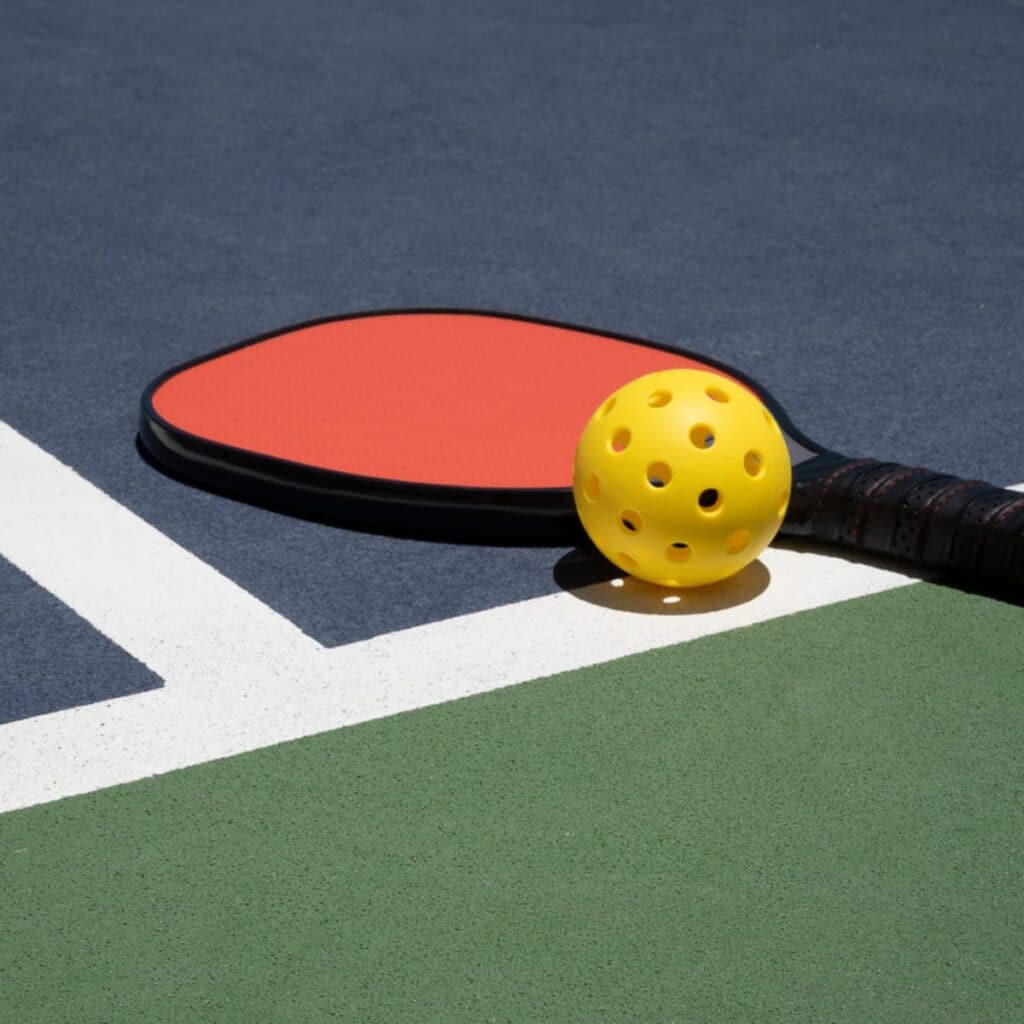
Final Thoughts
As we come to the end of this blog, discovering the components of a pickleball offers exciting facts. Pickleballs are similar to Wiffle balls but have different playing surface and conditions: the type balls used outdoors have 40 holes to withstand wind, while the balls used indoors have smaller holes. Each piece, composed of sturdy polyethylene plastic, weighs about 0.88 ounces. Paddles come in various materials, including carbon fiber paddles, graphite paddles, and composite paddles. Hence, surfaces for pickleball court surfaces, asphalt or concrete or athletic surfaces affect play. Outdoor pickleball court construction is similar to tennis courts, whereas indoor courts are made of wood or synthetic materials.
In conclusion, everything from permanent nets to USA Pickleball standards, including the kind of ball used, the courts’ surfaces, and the paddles’ materials, contributes to this exciting activity. The combination of recreational and competitive pickleball play is still gaining popularity.




